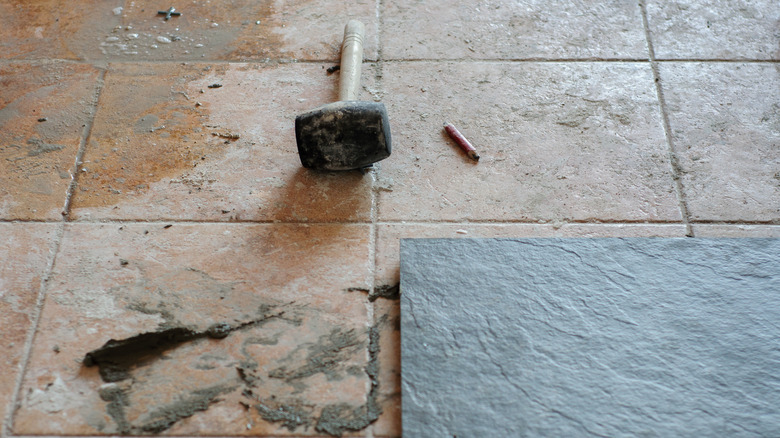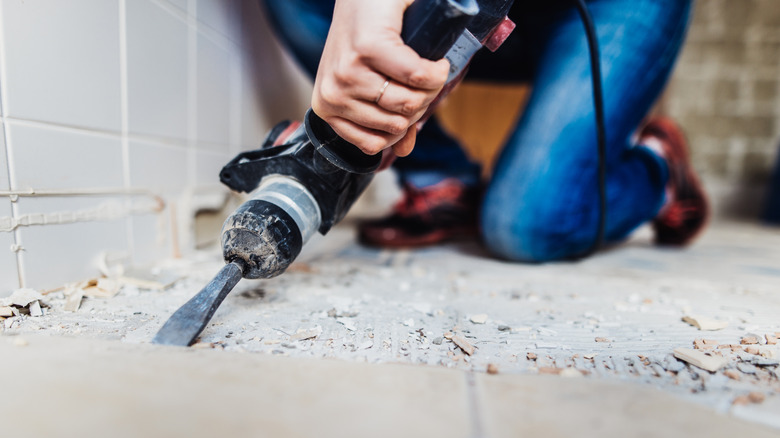What To Consider Before Choosing To Tile Over Existing Tile
Adding new tile to a floor or a wall can revitalize a space and help it feel fresh and exciting again while giving you a chance to try out more up-to-date visual trends. Although it can be tempting to tile over existing tile in the bathroom or kitchen, you need to give it some careful consideration beforehand — there are both pros and cons of doing so.
The major benefits of tiling over old tile are pretty clear: it can save you a lot of time and energy and will allow you to give a room a new look with much less effort. If you go this route, you won't have to demolish or remove existing tiles to add a new type of floor tile. You could save a lot of money, too, since you won't have to pay for as much professional laborer to complete the task or, if you want to rent a heavy stripping machine.
Even if you know how to lay tile, doing it over your current tiled wall or floor isn't always the best approach – especially if these features already have problems. So, consider its condition carefully first. Installing over the tile floors you already have can influence the dimensions and feel of the room. If you'd simply like to adjust the appearance of your floor or wall and give your bathroom or kitchen a much-needed refresh, tiling over exiting tile can be a good idea. However, if you're simply trying to cover up problems, you're probably better off making repairs instead.
Is tiling over your existing tile floors the right choice for you?
In addition to considering your budget, remember that tiling over an existing tile floor isn't a solution if you have serious problems. If you try to tile over uneven tiles or those that are damaged, it can cause bigger issues. Your new tile floor or wall could look uneven and its overall appearance may suffer significantly. If you proceed anyway, you may have to put so much work into fixing problems that the efficiency benefits (and perhaps any financial benefits) would be lost.
Failing to remove the old tile will also make the floor higher or extend the dimensions of a wall. This can be difficult to adjust, sure, but the uneven floor could also become a tripping hazard. Low cupboards or doorways could potentially get blocked with higher flooring, so you may need to make adjustments if you install over you current tile wall or floor.
Although these potential drawbacks are worth being aware of, installing over the tile you already have isn't always a bad idea. It could still be worthwhile if the current tile is in great condition and the raised height won't cause any issues. Don't rush into the project, however. Know what you're doing and consider both the pros and cons before getting started. Also, keep in mind that there are other ideas for covering up tile floors too, such as painting the tile or adding a rug — these changes might be easier to implement if you're simply in the mood for a visual update to your kitchen or bathroom.

